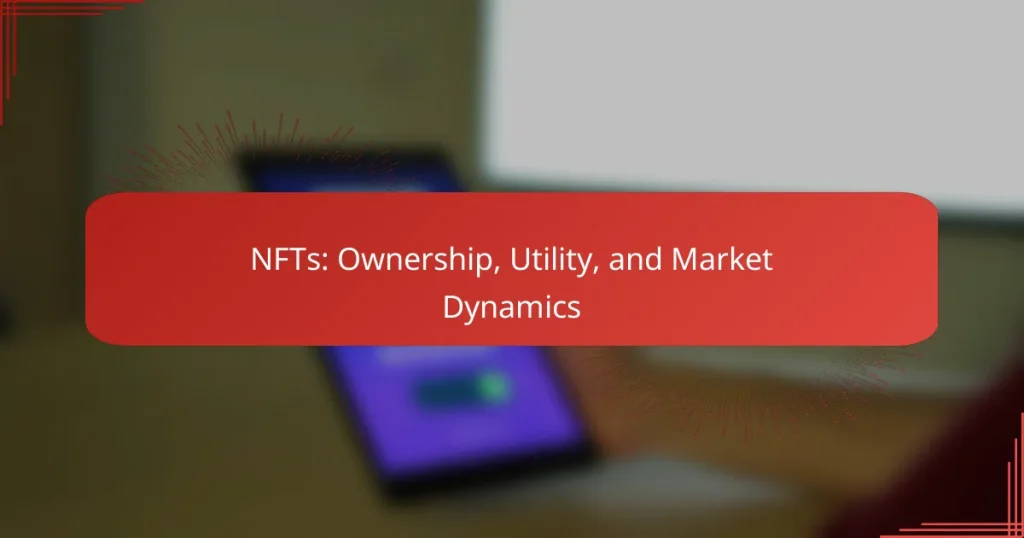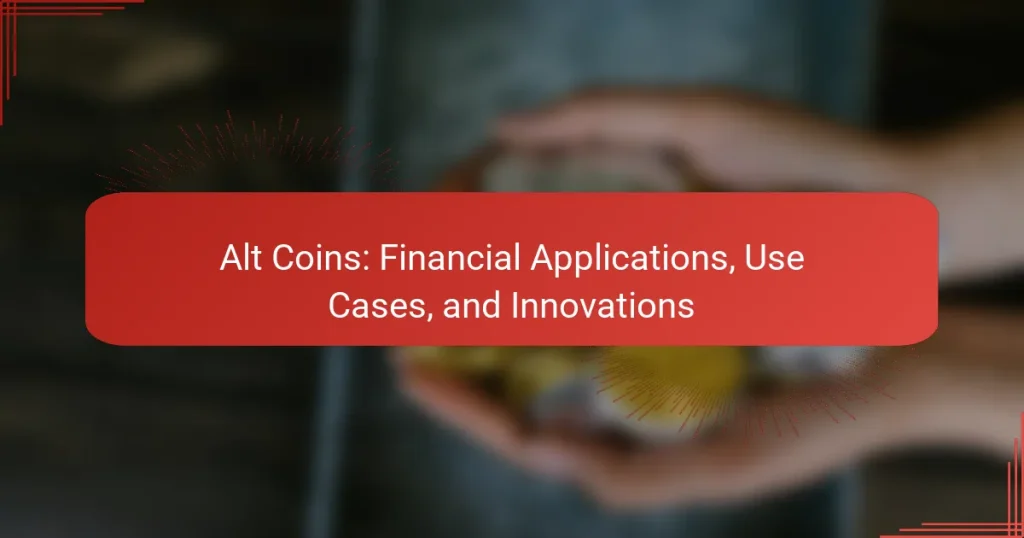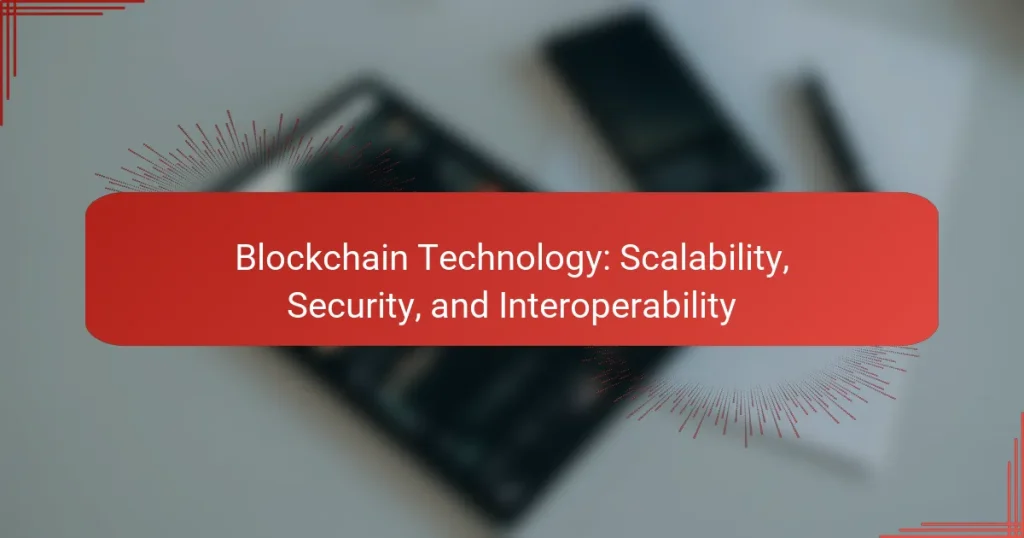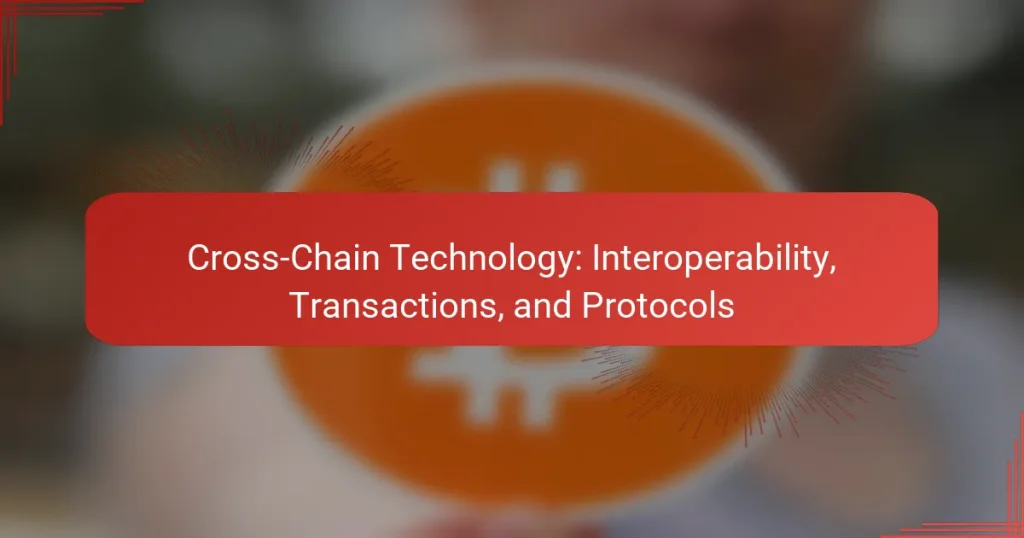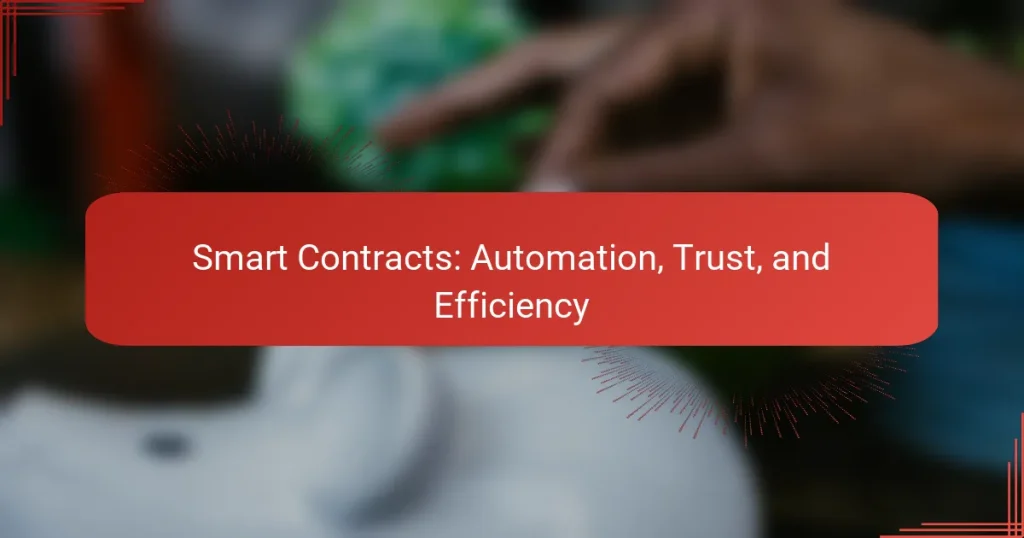Altcoin technology encompasses a range of innovative platforms and protocols that extend the capabilities of blockchain beyond Bitcoin. These digital currencies, known as altcoins, play a crucial role in decentralized finance (DeFi), enabling efficient cross-border payments and the creation of tokenized assets. With advantages such as lower transaction fees and faster processing times, altcoins present appealing alternatives for users in the evolving digital currency landscape.
Alt Coins: Environmental Impact, Sustainability, and Solutions
Alt Coins: Financial Applications, Use Cases, and Innovations
Blockchain Technology: Scalability, Security, and Interoperability
Cross-Chain Technology: Interoperability, Transactions, and Protocols
Consensus Mechanisms: Proof of Work, Proof of Stake, and Delegated Proof of Stake
Smart Contracts: Automation, Trust, and Efficiency
What are the top altcoin technologies?
The top altcoin technologies include innovative platforms and protocols that enhance blockchain functionality beyond Bitcoin. These technologies enable smart contracts, facilitate cross-border payments, and improve scalability and interoperability among different blockchain networks.
Ethereum smart contracts
Ethereum is renowned for its smart contract functionality, allowing developers to create decentralized applications (dApps) on its blockchain. Smart contracts are self-executing agreements with the terms directly written into code, eliminating the need for intermediaries.
These contracts automatically execute transactions when predefined conditions are met, making them ideal for various applications, such as finance, supply chain management, and gaming. However, developers must ensure their code is secure to avoid vulnerabilities that could lead to financial losses.
Ripple payment protocol
Ripple’s payment protocol is designed for fast and cost-effective international money transfers. It utilizes a unique consensus algorithm to validate transactions, enabling near-instantaneous transfers across borders.
This technology is particularly beneficial for banks and financial institutions looking to streamline cross-border payments, reducing transaction times from days to seconds. Ripple’s partnerships with major banks highlight its potential to revolutionize traditional banking systems.
Cardano proof-of-stake
Cardano employs a proof-of-stake (PoS) consensus mechanism, which allows users to validate transactions and create new blocks based on the amount of cryptocurrency they hold. This approach is more energy-efficient compared to traditional proof-of-work systems.
By using PoS, Cardano aims to enhance scalability and security while minimizing environmental impact. Users can participate in the network by staking their ADA tokens, earning rewards for their contributions to the ecosystem.
Polkadot interoperability
Polkadot is designed to enable different blockchains to communicate and share information seamlessly. Its unique architecture allows multiple blockchains, known as parachains, to operate in parallel while being connected to a central relay chain.
This interoperability facilitates the transfer of assets and data across various networks, enhancing functionality and user experience. Developers can create specialized blockchains tailored to specific applications, benefiting from shared security and scalability.
Chainlink decentralized oracles
Chainlink provides decentralized oracles that connect smart contracts with real-world data, enabling them to respond to external events. This technology is crucial for applications that require accurate and timely information, such as finance and insurance.
By using multiple data sources, Chainlink ensures the reliability and security of the information fed into smart contracts. This reduces the risk of manipulation and enhances the overall trustworthiness of decentralized applications.
How are altcoins used in finance?
Altcoins are digital currencies other than Bitcoin, and they serve various functions in the financial ecosystem. They are primarily used for decentralized finance (DeFi) applications, facilitating cross-border payments, and enabling the creation of tokenized assets.
Decentralized finance (DeFi) applications
DeFi applications leverage altcoins to provide financial services without traditional intermediaries like banks. These platforms allow users to lend, borrow, and earn interest on their cryptocurrency holdings, often at competitive rates.
For instance, users can stake their altcoins in liquidity pools to earn rewards, typically ranging from a few percent to over 100% annually, depending on the platform and market conditions. However, participants should be aware of risks such as smart contract vulnerabilities and market volatility.
Cross-border payments
Altcoins facilitate cross-border payments by offering faster and cheaper alternatives to traditional banking systems. Transactions can often be completed in minutes, compared to days for conventional methods, and fees can be significantly lower, sometimes just a fraction of a percent.
For example, using altcoins like Stellar (XLM) or Ripple (XRP) can reduce transaction costs and improve efficiency for remittances. However, users should consider factors like regulatory compliance and the volatility of the altcoin used.
Tokenized assets
Tokenized assets represent real-world assets on a blockchain, allowing for fractional ownership and increased liquidity. Altcoins play a crucial role in this process by serving as the medium for transactions and ownership transfers.
Examples include real estate, art, or commodities being tokenized, enabling investors to buy shares of high-value assets. This approach can democratize access to investments, but potential investors should evaluate the underlying asset’s value and the platform’s credibility before participating.
What are the benefits of using altcoins?
Altcoins offer several advantages over traditional cryptocurrencies like Bitcoin, including lower transaction fees, faster transaction speeds, and diverse investment opportunities. These benefits make altcoins appealing for users seeking cost-effective and efficient alternatives in the digital currency space.
Lower transaction fees
One of the primary benefits of using altcoins is their typically lower transaction fees compared to Bitcoin and other major cryptocurrencies. While Bitcoin fees can vary widely, altcoins often charge a fraction of a cent to a few dollars per transaction, making them more accessible for everyday use.
For example, coins like Litecoin and Stellar often have fees that are significantly lower, allowing users to conduct microtransactions without incurring prohibitive costs. This feature is particularly advantageous for businesses and individuals who frequently make small payments.
Faster transaction speeds
Altcoins generally offer faster transaction speeds, which can be crucial for users needing immediate confirmations. While Bitcoin transactions can take several minutes to process, many altcoins can confirm transactions in seconds or low tens of seconds.
For instance, Ripple and Nano are known for their rapid processing times, making them suitable for real-time payments and remittances. This speed can enhance user experience and facilitate smoother transactions in various applications.
Diverse investment opportunities
The altcoin market provides a wide array of investment opportunities, allowing investors to diversify their portfolios beyond Bitcoin. With thousands of altcoins available, each with unique features and use cases, investors can choose projects that align with their interests and risk tolerance.
For example, some altcoins focus on privacy, while others emphasize smart contracts or decentralized finance (DeFi). This diversity enables investors to explore various sectors within the cryptocurrency ecosystem, potentially increasing their chances of higher returns.
What are the risks associated with altcoins?
Altcoins carry several risks that investors should consider before entering the market. These include market volatility, regulatory challenges, and security vulnerabilities, each of which can significantly impact the value and usability of these cryptocurrencies.
Market volatility
Market volatility is a prominent risk associated with altcoins, often leading to significant price fluctuations within short periods. Unlike established cryptocurrencies like Bitcoin, many altcoins can experience dramatic changes in value, sometimes exceeding 20% in a single day.
Investors should be prepared for this volatility by setting clear investment goals and using stop-loss orders to mitigate potential losses. Diversifying a portfolio across multiple altcoins can also help manage risk, as it reduces exposure to any single asset’s price swings.
Regulatory challenges
Regulatory challenges pose a significant risk to altcoins, as governments worldwide are still developing frameworks to regulate cryptocurrencies. Changes in regulations can lead to sudden restrictions or even bans on certain altcoins, impacting their market viability.
Investors should stay informed about the regulatory landscape in their country and consider how potential changes could affect their investments. Engaging with legal experts or following reputable news sources can provide valuable insights into upcoming regulations.
Security vulnerabilities
Security vulnerabilities are another critical risk associated with altcoins, as many projects may not have robust security measures in place. Hacks and breaches have resulted in substantial losses for investors, particularly in less established altcoins.
To mitigate this risk, investors should conduct thorough research on the security protocols of altcoins before investing. Utilizing hardware wallets for storage and enabling two-factor authentication on exchanges can also enhance security and protect against potential threats.
How to choose the right altcoin for investment?
To choose the right altcoin for investment, consider factors such as market capitalization, technology, and community support. These elements can significantly influence an altcoin’s potential for growth and stability.
Market capitalization analysis
Market capitalization, or market cap, is the total value of a cryptocurrency, calculated by multiplying its current price by the total supply of coins. A higher market cap often indicates a more established and stable altcoin, while lower market caps may suggest higher volatility and risk.
When analyzing market cap, consider categorizing altcoins into three tiers: large-cap (over $10 billion), mid-cap ($1 billion to $10 billion), and small-cap (under $1 billion). Large-cap coins tend to be less volatile, while small-cap coins may offer higher growth potential but come with increased risk.
Technology evaluation
Assessing the underlying technology of an altcoin is crucial for understanding its potential. Look for features such as transaction speed, scalability, and security protocols. For example, some altcoins utilize proof-of-stake mechanisms, which can offer energy efficiency compared to traditional proof-of-work systems.
Additionally, review the development roadmap and any unique innovations that set the altcoin apart from competitors. A strong technological foundation can indicate a higher likelihood of long-term success.
Community support assessment
The strength of a cryptocurrency’s community can significantly impact its adoption and growth. A vibrant community often leads to better support, more development activity, and increased user engagement. Check forums, social media channels, and developer activity on platforms like GitHub to gauge community involvement.
Moreover, consider the altcoin’s partnerships and collaborations. Strong alliances with established companies or projects can enhance credibility and provide additional resources for growth.
What are the future trends in altcoin technology?
Future trends in altcoin technology include enhanced scalability, improved interoperability, and increased regulatory compliance. These developments aim to address current limitations and expand the use cases of altcoins in various sectors.
Increased institutional adoption
Increased institutional adoption of altcoins signifies a growing acceptance of cryptocurrencies among large financial entities and corporations. This trend is driven by the potential for altcoins to offer innovative solutions, diversify investment portfolios, and hedge against inflation.
Institutions are increasingly investing in altcoins for their unique features, such as smart contracts and decentralized finance (DeFi) applications. For example, companies like Tesla and MicroStrategy have allocated portions of their treasury to altcoins, reflecting confidence in their long-term value.
To navigate this trend, institutions should conduct thorough research on the altcoins they consider, focusing on their technology, use cases, and market dynamics. Engaging with regulatory frameworks and understanding the implications of digital asset investments is crucial to mitigate risks and ensure compliance.
